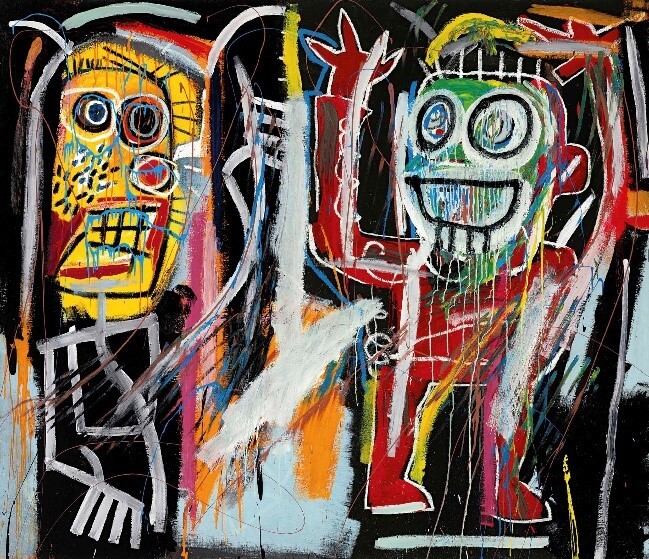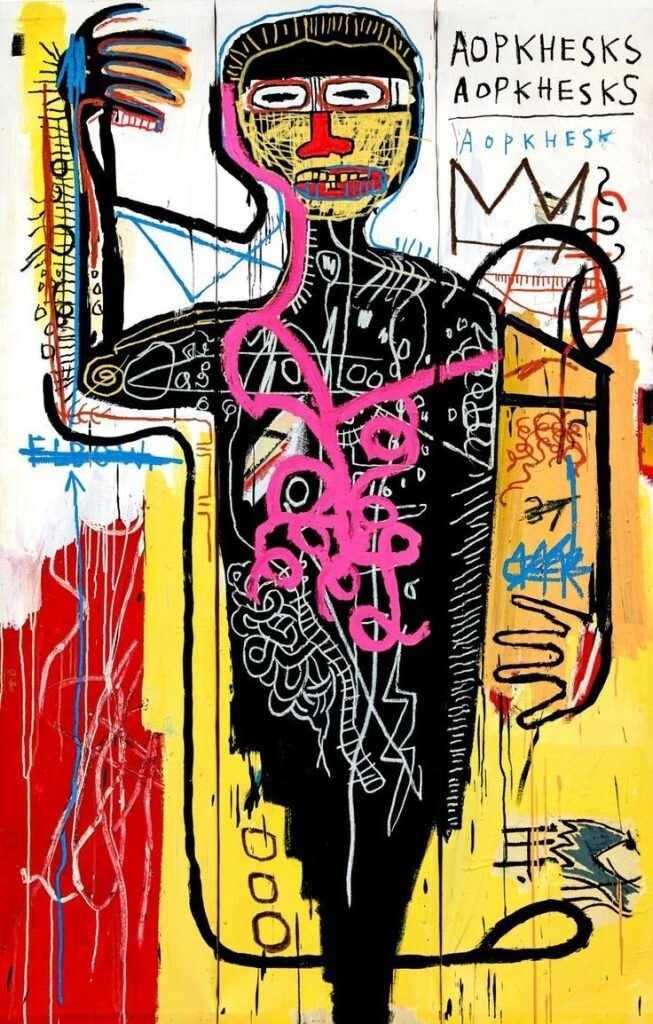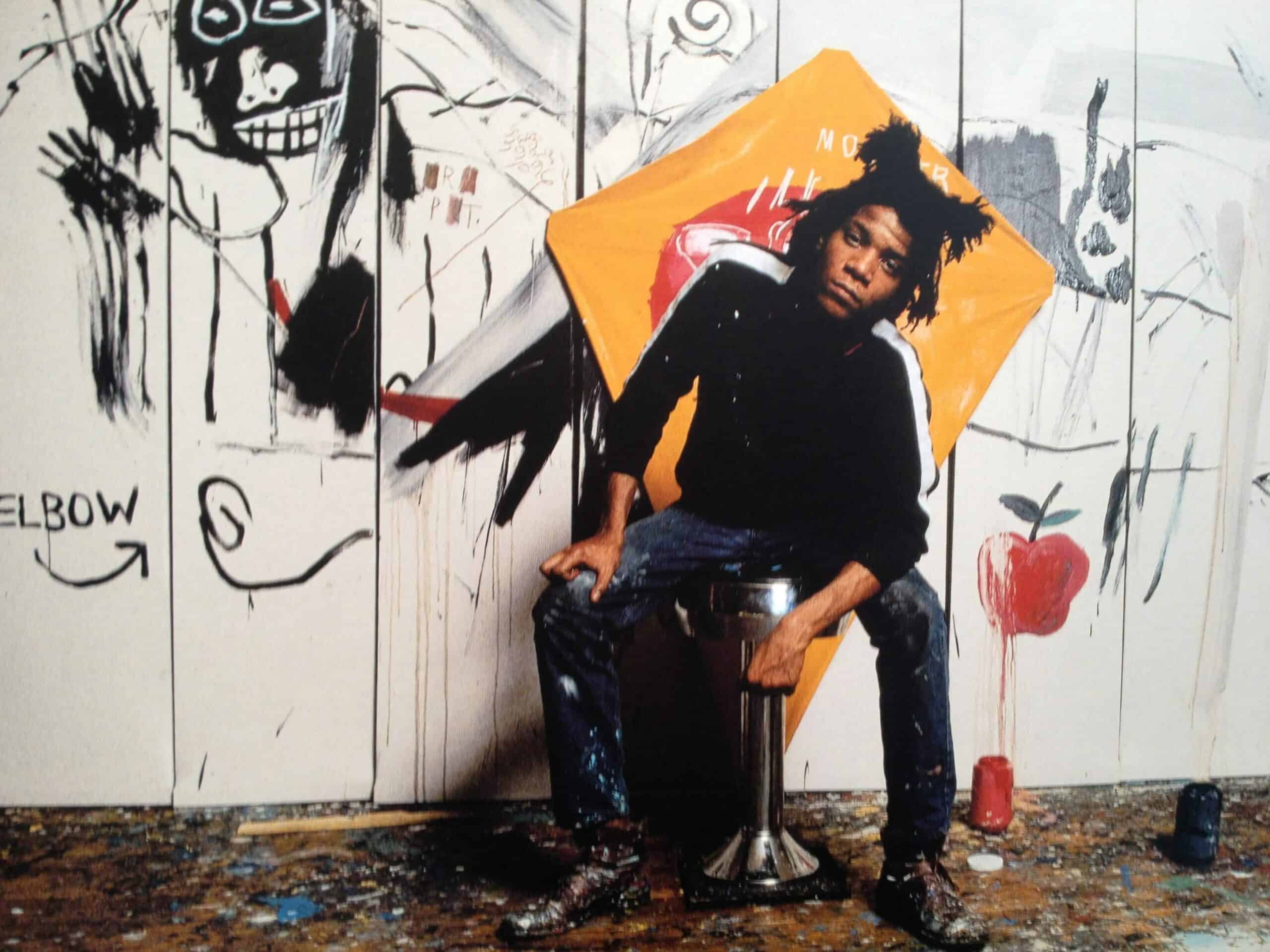Jean-Michel Basquiat

Jean-Michel Basquiat, born in 1960 to a Haitian father and Puerto Rican mother in Brooklyn, New York, rose from street artist to global art icon in under a decade. A self-taught prodigy, he began tagging city walls under the name SAMO before his raw, poetic, and politically charged imagery caught the attention of the New York art world in the early 1980s. His fusion of graffiti, fine art, and historical symbolism made him one of the first Black artists to break into an overwhelmingly white gallery system on his own terms.

Basquiat’s paintings are electric with color, text, and cultural commentary—layered compositions filled with symbols, skulls, crowns, jazz references, and urgent social critique. He painted Black figures as kings, saints, and heroes, reclaiming representation in a world that often erased or distorted it. His use of text was both chaotic and precise, channeling the fragmented experience of navigating race, power, and identity in modern America.

Through works like 'Defacement' and 'Irony of a Negro Policeman', Basquiat confronted issues of police brutality, systemic racism, and the complex duality of Black identity within structures of oppression. He celebrated the African diaspora, honored cultural icons like Miles Davis and Muhammad Ali, and used his art as both memory and resistance, challenging dominant historical narratives while documenting the Black experience in real time.

Despite his meteoric rise, collaborating with Andy Warhol and exhibiting in the Whitney and Guggenheim, Basquiat battled racism, addiction, and the weight of fame. He died at just 27 in 1988, but his legacy continues to shape art, fashion, music, and politics. His work commands record-breaking prices, but more importantly, it commands attention, reminding us that art can be both beautiful and confrontational, personal and political, urgent and eternal.

?
How did Basquiat’s cultural background shape the symbols and figures in his work?
Why do you think he crowned the Black subjects in his paintings?
In what ways did his graffiti roots still shine through when he started painting on canvas?
How did fame and the art market affect Basquiat’s life and creativity?
What role do you think activism and social justice played in his art?
Why do you think Basquiat’s work still resonates so strongly with today’s pop culture?
Dig Deeper
Learn about the life of American artist Jean-Michel Basquiat, from his start as part of graffiti duo SAMO to his rise as an internationally renowned painter.
Discover more

Keith Haring
Haring taught us that art doesn’t need a fancy frame, it can live on any wall, everywhere. With chalk, color, and courage, he transformed public spaces into calls for justice and joy. His work reminds us that creativity can be a tool for visibility, healing, and collective action.

Andy Warhol
Warhol showed us that art doesn’t have to be rarefied — it can be mass-produced, branded, and broadcast. He turned the ordinary into icons and held up a silkscreened lens to our obsessions, proving that culture itself could be both canvas and critique.

Jacob Lawrence
Jacob Lawrence showed how art can bring hidden histories to life, that each person’s story matters and can reshape the way we see the world. His work reminds us that art is a witness, a teacher, and a vessel for truth.
Further Reading
Stay curious!
